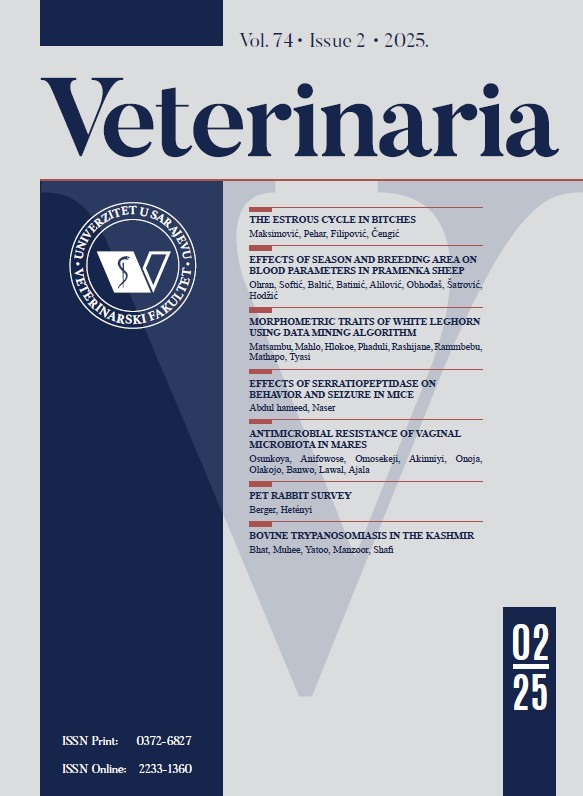Influence of hyperthermia on dimensions of erythrocytes: Experimental preliminary study on rats
DOI:
https://doi.org/10.51607/22331360.2022.71.1.41Keywords:
Body temperature, diameter, heat, red blood cells, ratsAbstract
The aim of these study was to examine how elevated body temperature effects on the diameter of red blood cells in the study group of rats. The total sample of 38 rats was divided into three experimental groups, depending on the exposure of temperature water of 37°C, 41°C and 44°C. The group of rats exposed to temperatures of 41°C-G41 and 44°C-G44 were divided into two subgroups: a subgroup on which an antemortem analysis was performed after exposure to a temperature of 41°C and 44°C for 20 minutes (G41-AM=7; G44-AM=8) and a subgroups on which a postmortem analysis were performed after death has occurred (G41-PM=8; G44-PM=8). Seven days before exposure to temperature, blood sampling was performed for all three study groups. After exposure to a temperature of 20 minutes, blood sampling was performed in control group KG37 and subgroups G41-AM and G44-AM. After exposure to temperatures of 41°C and 44°C in postmortem subgroups, sampling was performed after death (subgroups G41-PM and G44-PM). Morphometric analysis by Giemsa method involved the determination of the diameter (μm) of the examined erythrocytes. The mean value of erythrocyte changes in the examined groups of rats was: KG37=6.57 ± 0.45; G41-AM=6.90 ± 0.22; G41-PM=6.79 ± 0.42; G44-AM=6.68 ± 0.43 and G44-PM=6.32 ± 0.37. Results of T test showed that there is a statistically significant difference between the erythrocyte diameters of subgroup G41-PM and G44-PM (p=0.049). There are significant changes in the diameter of erythrocytes, where the value of temperature as well as the exposure time significantly affects the diameter of erythrocytes.
Downloads
Published
How to Cite
Issue
Section
License
Copyright (c) 2022 Emina Dervišević, Muhamed Katica, Zurifa Ajanović, Anes Jogunčić, Lejla Dervišević, Muamer Dervišević, Adis Salihbegović

This work is licensed under a Creative Commons Attribution 4.0 International License.








